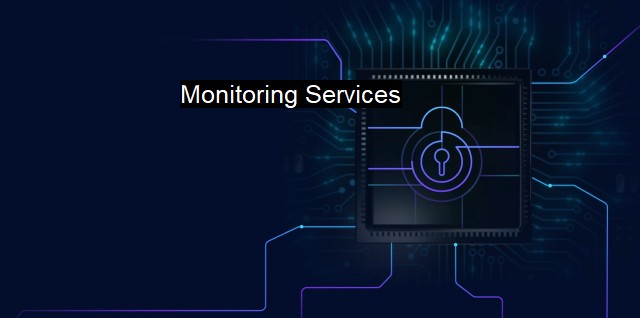What are Monitoring Services?
Protecting Online Data: The Vital Role of Monitoring Services in Cybersecurity
Monitoring services in the context of cybersecurity and antivirus are vital assets for maintaining the security, integrity and continuity of personal and business digital operations. Primarily, monitoring services encompass a range of tools, measures, strategies, and systems designed to provide continuous oversight over a given digital infrastructure, systems or set of data.Their main objective is to identify any form of malicious activity or discrepant behaviors suggestive of a potential cyber threat. They play a crucial preventative role by alerting system owners or administrators of potential threats or attacks, minimizing the likelihood of successful compromises on high-value information. By continuously tracking activities, monitoring services can detect system vulnerabilities, irregularities and deviations, contributing to efficient threat detection, security breaches and response systems.
There are several methods employed by monitoring services. First, Intrusion Detection System (IDS) monitors network traffic for indications of potential threats such as viruses, worms, or other forms of malicious activity. IDSs can either be network-based, monitoring traffic for the entire system, or host-based, monitoring activities on a specific device.
Another significant element is the Security Information and Event Management (SIEM) system. This operates by collecting, storing, analyzing and presenting security-related data from across networks. Combining it with its real-time analysis and reporting allows security administrators to react promptly to any imminent threats. It gives comprehensive insight into the cybersecurity landscape of a business by understanding usual network behaviors, thereby quickly identifying and predictors of an attack, providing critical intelligence for decision-making in breach situations.
Next, antivirus software is an integral part of monitoring services. These programs function by scanning, identifying, and neutralizing threats within host devices. Typically, antivirus software can identify known threats based on a database of identified malware signatures. Modern versions can typically monitor for unusual or suspicious behaviour - an application attempting to access files it normally wouldn’t - to proactively identify previously unidentified threats.
Deep packet inspection is a critical component as well. It's a form of computer network packet filtering that involves the inspection of the data part of a packet as it goes through an inspection point. This is important in assessing if packets are malicious or not. It arduously scrutinizes each data packet's header and core, identifying suspicious, dangerous activity or use.
Monitoring services embrace functionalities such as log management solutions, where data logs are analyzed for discrepant behaviors. Vulnerability scanners that proactively seek system weaknesses and event correlators that look for patterns in activities are vital aspects as well.
To put the importance of these tools in context, considering the global increase in digital dependency, cyber criminals constantly innovate, devising new modalities of cyber attacks. Organizations may suffer from devastating effects such as financial loss, reputational damage, and loss of confidentiality, among others if they fall prey to these attacks. Therefore, monitoring services are essential safeguards. They not only protect business operations but also incline towards anticipating threats by studying anomalies, averting potential cyber misfortunes.
Monitoring services in cybersecurity and antivirus comprise an assortment of systems, software, and tools that together, provide comprehensive security infrastructure. They function around the clock, searching systematically for suspicious activities or threats that could derail digital operations. They also endow businesses with the knowledge needed to stay a step ahead of cybercriminals, creating a resilient and secure digital space. While they may not provide absolute protection against cyber threats due to the constantly changing landscape, the importance of their role cannot be overstated in maintaining a robust first line of defense against cyber attacks.

Monitoring Services FAQs
What is a monitoring service in the context of cybersecurity and antivirus software?
A monitoring service is a type of software that constantly scans a network or device for any suspicious activity that may indicate a security threat. It typically includes features such as intrusion detection, threat intelligence, and real-time alerts to notify administrators of any potential breaches.What types of security threats can a monitoring service detect?
A monitoring service can detect a wide range of security threats, including malware infections, unauthorized access attempts, data breaches, and phishing attacks. It can also monitor for unusual network traffic patterns and system behavior that may indicate the presence of a threat.What are the benefits of using a monitoring service for cybersecurity?
Using a monitoring service for cybersecurity can provide several benefits, such as: early detection and prevention of security threats, improved incident response times, increased visibility into network activity, better compliance with data privacy regulations, and enhanced overall security posture.What should I look for when choosing a monitoring service for my organization?
When choosing a monitoring service for your organization, you should consider factors such as: the types of security threats it can detect, the level of automation and customization it offers, the ease of use and integration with existing software, the cost and licensing terms, and the reputation and track record of the vendor. It may also be helpful to read reviews and consult with security experts to find the best fit for your specific needs.| | A | | | B | | | C | | | D | | | E | | | F | | | G | | | H | | | I | | | J | | | K | | | L | | | M | |
| | N | | | O | | | P | | | Q | | | R | | | S | | | T | | | U | | | V | | | W | | | X | | | Y | | | Z | |
| | 1 | | | 2 | | | 3 | | | 4 | | | 7 | | | 8 | | |||||||